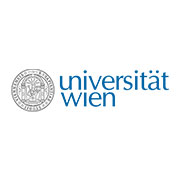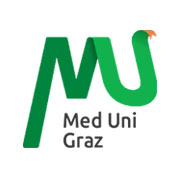
WP 4.2 Permafrost, Climate Change, and the Soil Microbiome-Climate Feedback
project description
Permafrost is thawing because of global warming. The impact of this is vast, rapid, and potentially devastating, affecting both humans and natural ecosystems. Warming-induced microbial decomposition of organic matter in permafrost soils, estimated at 1,300-1,800 Gt C, or about twice the current amount of C in the atmosphere, will cause feedbacks of uncertain magnitude, potentially exposing humanity to long-term consequences that cannot be fully assessed based on current knowledge.
Key to predicting the permafrost-climate feedback is an understanding of the processes at the permafrost thaw front, where microbial communities are exposed to recurrent perturbations. Moreover, permafrost contains a record locked up in frozen ancient DNA going back thousands to tens of thousands of years, providing unique opportunities to understand microbiome responses to environmental change over long timescales, and allowing informed predictions of the effects of climate change on Arctic microbiomes.
The key questions of this WP are therefore: (i) How will microbiomes assemble upon thawing and are they similar to communities from previous thawing events? (ii) How have permafrost microbiomes changed across ancient time, and do these changes reflect environmental conditions at the time of freezing? (iii) How is the growth and turnover of microbial communities of all three domains of life controlled at the permafrost thaw front and what does that mean for the stability of the permafrost carbon? (iv) How does the top-down control of these microbial communities unfold by predation (i.e., by protists and phages)? By addressing these questions comparatively in gradually and abruptly thawing conditions, we will elucidate specific controls that are prerequisites for modeling large-scale permafrost thaw feedbacks envisioned for the second period of this CoE.
While numerous laboratory incubation experiments have been conducted with permafrost soil, the functioning of thawing permafrost microbiomes has rarely been directly approached in field settings and compared to similar events in the past. We propose in-situ warming experiments in the Canadian Arctic in the continuous permafrost zone and at the southern margin of the permafrost distribution. Thawing and warming will be carried out by installing heating rods to the maximum thawing depth and approximately 30 cm into the permafrost. Experiments will be conducted over four vegetation periods, with the last two periods resulting in talik formation (permanently unfreezing soil). We will measure time series of permafrost community composition and potential functions in C, N, P, and S cycling by multi-omics, estimate microbial activity and growth by 18O-quantitative stable isotope probing, and soil organic matter decomposition and nutrient cycling by a range of 13C, 15N, 33P, and 35S-pool dilution experiments. Additionally, we will investigate ancient DNA preservation in permafrost to distinguish ancient and current microbial communities by advanced bioinformatic approaches. In-situ warming and thawing experiments in permafrost soils are extremely rare, and to our knowledge, nobody has ever investigated the microbial community and its response to thawing in all three domains of life, plus viruses, in such an experiment to date.
work package leader

andreas richter
University of Vienna
Professor at and Head of the Division of Terrestrial Ecosystem Research (CeMESS)
Head of the Centre for Microbiology and Environmental Systems Science (CeMESS)
CoE Key Researcher
work package members

matthias horn
CoE Key Researcher
university of vienna

christinA kaiser
CoE Key Researcher
university of vienna

alexander Loy
CoE Key Researcher
university of vienna

christine moissl-eichinger
CoE Key Researcher
medical university of graz

thomas rattei
CoE Key Researcher
university of vienna

Foto: Clemens Fabry
chin chin too
Postdoctoral Reseacher
university of vienna

Foto: Clemens Fabry
N. N.
Postdoctoral Reseacher
university of vienna
involved institutions


CoE publications in wp 4.2
Publications will follow soon

